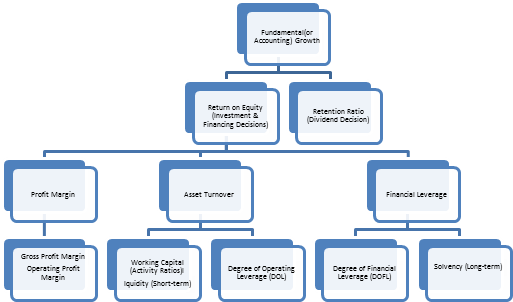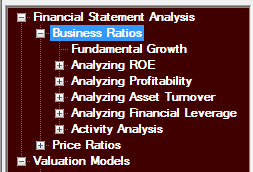Chapter 3: Financial Statement Analysis:
Business Ratios
|
I |
n Chapter 2, you saw how
easy it is to access company filings with Valuation Tutor.
In this chapter, we begin analyzing this data. As stated
in the introduction, financial statement analysis is a set of
techniques to analyze the financial performance of a company, to
assess its strengths and weaknesses, and to compare it to other
firms in the same industry.
This is important to both investors in the financial
markets and managers in the firms.

Figure 1: Capital Markets
Three major decisions made
by manager’s of a firm are the investment, financing and
dividend decisions.
These decisions are important for financial statement analysis
because the major statements result from the firm’s decision. As
a result, over time various measures have evolved to provide
insight into and assess the performance of these decisions.
An overview of these measures and their
interrelationships is depicted in the following figure:


·
Conceptual skills required
for understanding this flowchart,
·
Practical skills
associated with what the metrics are and how they are
constructed using current real world financial statements
(including terminology, aggregation and critical accounting
judgments)
·
Professional judgment
skills including how to interpet and make decisions from
information in the current 10-K filings
To reinforce important
concepts and measures we will reconcile each metric using the
2010 10-K filing of Procter and Gamble (PG) and demonstrate how
you can immediately extend this to any current filing with the
SEC
The Valuation Tutor
software for this Chapter is organized as follows:

In the next topic, we first review how you bring up the 2010
10-K of PG which will be used in each of the subsequent topics
for reconciliation purposes.
As a result, you may refer back to this topic if you want
to skip forward to later topics.
